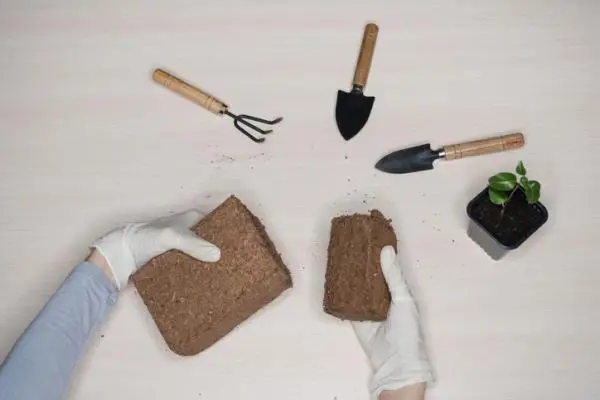There are many ways to prepare substrate for pots and plants, from which you simply buy the universal substrate bag, to which you prepare at home with each ingredient separately, according to the needs of the plants we want to grow. In both cases, there are many who choose in many cases to add coconut fiber to their chosen mix. This material is one of the most used among those that mix their own substrate, as well as being very popular in hydroponic crops.
If you want to learn more about this material to grow plants, join us in this article in which we explain what are the properties of coconut fiber for plants and how to make it .
Importance of drainage and aeration of the substrate for plants
Coconut fiber stands out as a substrate for its ability to provide a base with very good aeration and drainage for plants. Both characteristics are vital in the cultivation of a large number of species, which is why this material has progressively gained ground to the classic peat.
The aeration in the substrate is very important to provide a more comfortable rootedness to the plant, where the roots do not have to fight their way through a dense medium and caked. In addition, better air circulation helps prevent unwanted fungi and pathogens.
On the other hand, drainage can be even more important for a huge number of species. There are many plants that do not support excess moisture in their roots, whether they originate in dry and arid environments such as many succulents, or if they come from tropical regions such as some plants appreciated for their flowers. A substrate that provides good water drainage will allow the roots to absorb the amount of water they need and let the rest escape, thus avoiding prolonged stagnations that can cause rot and weakness.
What is coconut fiber for plants and its properties
What is bought as coconut fiber is nothing other than the short fibers of the coconut pulverized together with small particles of the fruit itself, which is sold in large dry and pressed boards, in the form of tablets for smaller surfaces or, even, also can be purchased without pressing.
There are a large number of properties and benefits of coconut fiber for plants , more specifically to prepare the substrate in crops and gardening:
- It has a large aeration capacity.
- It retains moisture but offers good drainage, so that it gives the plants a fair measure of water, retaining a small part of moisture that helps the plant to endure between waterings, but without causing harmful flooding.
- It offers a neutral pH between 5.5 and 6.5, inert for most plants.
- Similar to water, it has a great capacity to retain minerals and nutrients, which it then releases gradually and progressively.
- In addition to all this, coconut fiber is a natural and ecological product, so you do not need to worry about possible contamination by chemicals in your crop.

How to make coconut fiber for plants
Preparing coconut substrate is much simpler than it may seem at first. In fact, in many cases, it is enough to simply prepare the fiber and add some other nutrient-rich material or organic matter as compost.
Although there are many recipes, here we are going to teach you how to prepare one of the best universal substrates with coconut fiber that you can find. Follow this simple step by step to prepare coconut fiber for your plants :
- The first thing you need is, of course, the coconut fiber itself. This will occupy 60% of the mixture, but be careful because if you have bought it in the form of an iron or pressed tablets, it will multiply its volume several times when you have moistened and stirred it.
- Wet it and help yourself with a rake or some other tool to undo the block it forms, patiently and evenly. Once you have the loose and moistened fiber, you can gather an amount that is 60% of the final mixture and apply the other 40% of the base mixture, which will provide the most important nutrients for your plants.
- We recommend earthworm humus as it is a totally ecological product and one of the best natural fertilizers that can be found. Stir it along with the coconut fiber, making sure to mix the materials completely.
- Finally, the final touch is given with a small contribution of vermiculite and perlite, which help with the retention of just water that is needed, in addition to giving a small, very beneficial mineral contribution.


